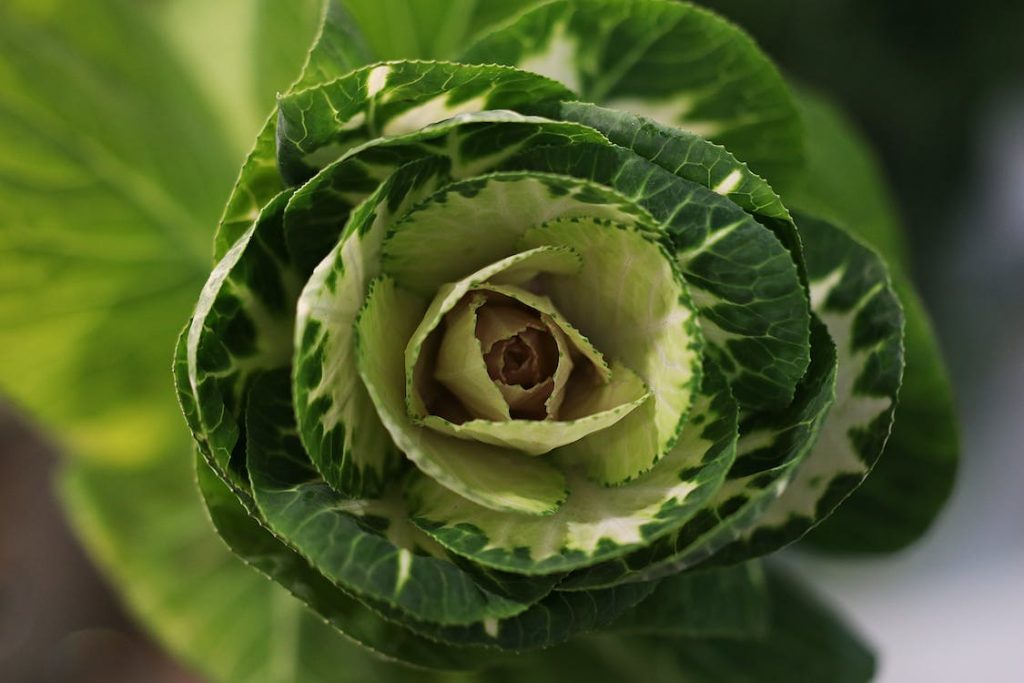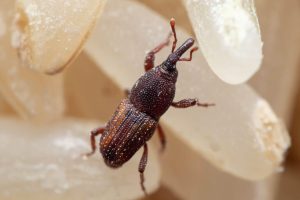Cabbage worms can be a gardener’s worst nightmare. These tiny yet voracious creatures have the uncanny ability to wreak havoc on your precious cabbage crops, leaving you frustrated and disheartened. In this comprehensive article, we will journey into the world of cabbage worms, exploring how to identify them, understand their life cycle, assess the damages they cause, and most importantly, learn effective methods to get rid of these persistent pests and prevent future infestations. So, put on your gardening gloves and let’s embark on a journey to tackle the menace of cabbage worms!
Cabbage worms are common garden pests that belong to the family Pieridae, which includes butterflies. They are the larval stage (caterpillars) of certain butterfly species that feed on plants in the cabbage family, also known as cruciferous or brassicaceae plants.
The two primary species of cabbage worms that often cause problems in gardens are the imported cabbage worm (Pieris rapae) and the cabbage looper (Trichoplusia ni).
How to Identify Cabbage Worms
Identifying cabbage worms is crucial for any gardener wanting to protect their cabbage plants. These pests belong to the family of Pieridae butterflies and are usually found in two primary species: the imported cabbage worm (Pieris rapae) and the cabbage looper (Trichoplusia ni).
The imported cabbage worm appears as a pale green caterpillar with a velvety texture on its body. It has a distinguishing single yellow line along its back and faint yellow stripes running along its sides. As it grows, this caterpillar can reach up to 1.5 inches in length, making it relatively easy to spot.
On the other hand, the cabbage looper showcases a more distinctive appearance. Its body is light green, marked by white lines on its back. The name “looper” comes from its unique way of moving by arching its back and then extending its body forward, creating a looping motion as it crawls.
Last summer, I faced a daunting task of dealing with cabbage worms in my vegetable garden. At first glance, I mistook the pale green caterpillars for part of the cabbage leaves. Only after a closer inspection did I realize the true nature of the problem. Learning to identify these pests helped me take immediate action to protect my cabbage crop.
The Life Cycle and Damages Caused
Understanding the life cycle of cabbage worms is vital to interrupt their breeding process effectively. The life cycle consists of four distinct stages: egg, larva (caterpillar), pupa, and adult butterfly.
- Egg Stage: Adult female butterflies lay tiny, yellowish eggs on the underside of cabbage leaves. These eggs are hardly visible to the naked eye but act as the starting point of the cabbage worm infestation.
- Larva Stage: Once the eggs hatch, the larval or caterpillar stage begins. The emerging caterpillars are insatiable eaters, voraciously consuming cabbage leaves and causing significant damage to the plants.
- Pupa Stage: After gorging on cabbage leaves for a few weeks, the caterpillars seek a safe spot to pupate. They form a chrysalis or cocoon, where they undergo metamorphosis into adult butterflies.
- Adult Stage: The adult butterflies emerge from the pupa, and the cycle repeats as they lay more eggs to perpetuate the infestation.
As these caterpillars feed on cabbage leaves, they create unsightly holes and chew marks, severely compromising the overall health of the plant. In severe cases, the damage can be so extensive that the cabbage plant may not be salvageable.
Read also: Spider mites on roses
Causes of Cabbage Worms
Cabbage worms are not creatures of malevolence; they simply follow their instincts to survive and reproduce. Understanding the underlying causes of cabbage worm infestations can aid in developing effective prevention strategies.
- Environmental Factors: Cabbage worms thrive in mild climates with moderate temperatures, making spring and fall seasons their prime breeding periods. Additionally, they prefer humid environments, which can further contribute to their proliferation.
- Uncontrolled Vegetation: Nearby uncultivated areas or wild cruciferous plants can act as breeding grounds for cabbage worms. If left unchecked, these sources can lead to the rapid spread of pests into your cabbage patch.
- Lack of Natural Predators: In some cases, the absence of natural predators, such as birds, spiders, or parasitoid wasps, can lead to an imbalance in the ecosystem, allowing cabbage worm populations to grow unchecked.
- Poor Garden Hygiene: Failing to practice proper garden hygiene, like leaving decaying plant matter or not rotating crops, can attract cabbage worms and provide them with a conducive environment to thrive.
How to Get Rid of Cabbage Worms

When confronted with a cabbage worm invasion, it’s essential to take prompt action to safeguard your cabbage plants. There are several effective methods to get rid of these persistent pests:
- Handpicking: One of the simplest and most environmentally friendly methods is to manually pick off the caterpillars from the cabbage leaves. This method is particularly effective for smaller gardens or minor infestations.
- Beneficial Insects: Introducing natural predators into your garden can significantly reduce cabbage worm populations. Ladybugs, lacewings, and parasitoid wasps are natural enemies of cabbage worms and can help keep their numbers in check.
- Biological Pesticides: Utilizing biopesticides, like Bacillus thuringiensis (Bt), is an eco-friendly way to combat cabbage worms. Bt is a bacteria-based insecticide that targets specific pests like cabbage worms while being harmless to humans and other beneficial insects.
- Neem Oil Spray: Neem oil, derived from the neem tree, is an organic solution that acts as a repellent for cabbage worms. Dilute the oil in water and spray it on the cabbage leaves to deter the pests from feeding.
- Floating Row Covers: These lightweight, breathable fabrics act as physical barriers, preventing adult butterflies from laying their eggs on the cabbage plants.
- Hot Pepper Spray: Cabbage worms dislike the strong taste and smell of hot peppers, making hot pepper spray an effective deterrent. To prepare the spray, mix a tablespoon of hot pepper powder or hot sauce with a quart of water and a few drops of dish soap to help the solution adhere to the leaves. Spray the mixture on the cabbage leaves, but be cautious not to spray it on yourself, as it can cause irritation.
- Crop Netting: If you have a recurring cabbage worm problem, consider investing in crop netting. This fine mesh netting can be draped over your cabbage plants to create a physical barrier against adult butterflies, preventing them from laying eggs on the leaves. Crop netting is an effective long-term solution and can also protect your plants from other pests and birds.
- Cultivate Trap Crops: Trap crops are sacrificial plants that attract cabbage worms away from your main cabbage crop. Planting a trap crop like mustard or collard greens at a distance from your cabbage plants can lure the pests away, reducing the damage to your main crop. Remember to inspect and dispose of the caterpillars on the trap crop regularly.
In my quest to eliminate cabbage worms from my garden, I decided to employ a two-pronged approach. Firstly, I enlisted the help of ladybugs and released them strategically amidst my cabbage patch. Secondly, I sprayed neem oil on the leaves to deter any persisting caterpillars. The combination of these methods yielded promising results, and I witnessed a significant reduction in cabbage worm activity.
Read also: How to get rid or rice weevils
How to Prevent Cabbage Worms

Prevention is always better than cure, and this holds true for cabbage worms as well. Implementing preventive measures can help ensure a healthy cabbage crop and reduce the likelihood of future infestations.
- Crop Rotation: Practicing crop rotation is an effective technique to disrupt the cabbage worm’s life cycle. By moving your cabbage plants to different locations each year, you minimize the chances of caterpillar survival.
- Clean Garden Hygiene: Regularly clean your garden by removing fallen leaves, decaying plant matter, and other debris. This reduces potential breeding sites for cabbage worms and other pests.
- Companion Planting: Intercropping cabbage with companion plants like mint, rosemary, and thyme can act as natural repellents for cabbage worms.
- Attracting Birds: Encourage birds to visit your garden by providing birdhouses and bird feeders. Birds are natural predators of cabbage worms and can help control their population.
- Natural Sprays: Applying a garlic or chili pepper spray to cabbage leaves can deter adult butterflies from laying eggs on them.
To prevent any future encounters with cabbage worms, I adopted a combination of crop rotation and companion planting in my garden. I noticed that planting mint around my cabbage plants not only acted as a natural deterrent but also added a pleasant aroma to my garden space.
Read also: How to get rid of bean weevils
The bottom line
Cabbage worms may be persistent pests, but armed with knowledge and effective strategies, you can defend your cabbage crops from their ravages. Identifying the caterpillars and implementing proper prevention and control methods are essential steps in ensuring a flourishing cabbage garden.
As a gardener, I have come to appreciate the delicate balance between the natural world and my cultivated space. Embracing eco-friendly practices and learning from my experiences has not only helped me overcome the challenges posed by cabbage worms but has also deepened my connection with nature. Let’s remember that in our gardens, we coexist with a diverse range of organisms, and seeking harmony with them can lead to a bountiful and fulfilling gardening journey. Happy gardening!
